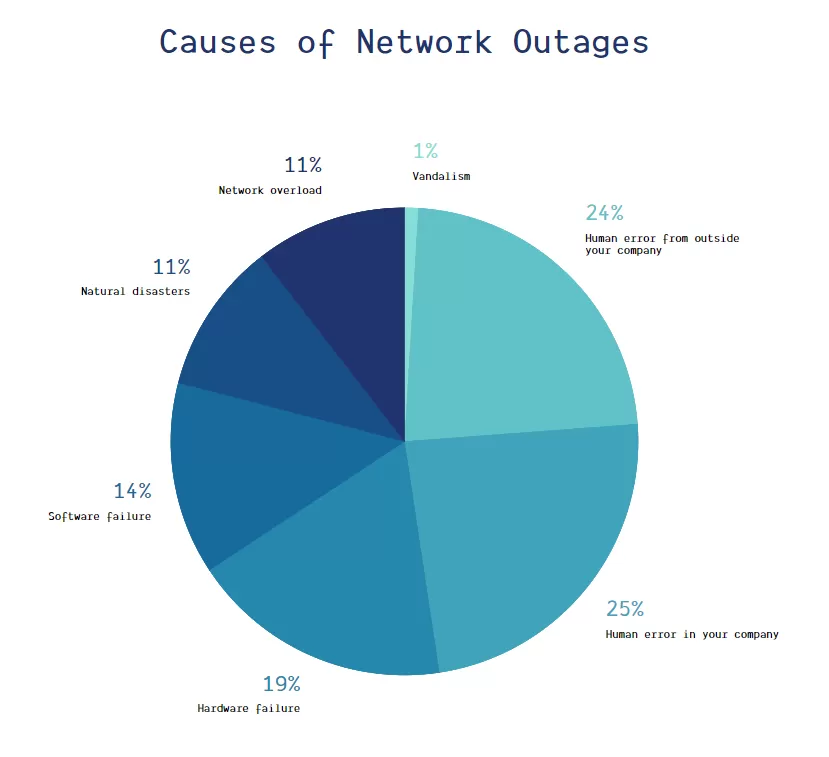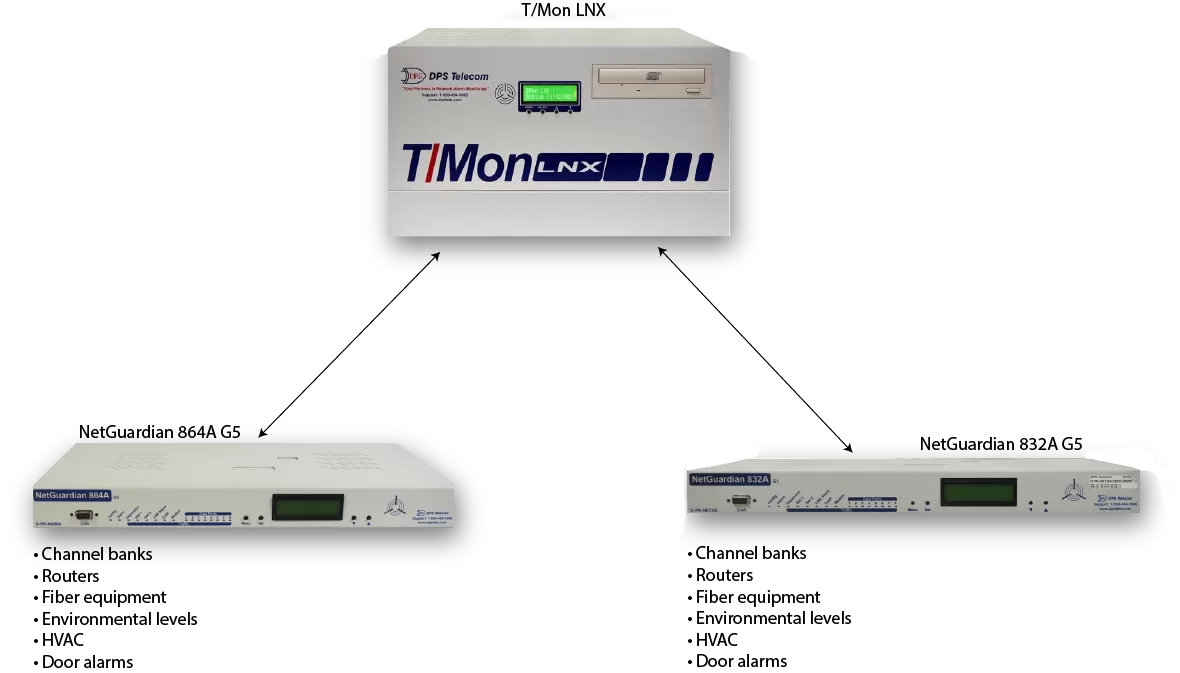Check out our White Paper Series!
A complete library of helpful advice and survival guides for every aspect of system monitoring and control.
1-800-693-0351
Have a specific question? Ask our team of expert engineers and get a specific answer!
Sign up for the next DPS Factory Training!

Whether you're new to our equipment or you've used it for years, DPS factory training is the best way to get more from your monitoring.
Reserve Your Seat TodayWhen your company depends on its telecom network, a network outage is a body flow. Everybody feels it. Customers complain. Bosses are angry. Most of all, the pressure comes down to you because it's your job to make sure this doesn't happen.
It's bad enough that you came to work on Monday and found out the network's been down since early Saturday morning. It gets even worse after the initial problem is fixed.
Even though it took hours of overtime, you identified the malfunctioning device that caused the problem, repaired it, and got the network back online. But, the next day, your boss calls you in and he wants to know: How did this happen? What are you going to do to stop it from happening again?
Well, what are you going to do?
In telecom environments, no technology is infallible, and equipment failures are a fact of life. However, at the same time, a network outage can bring catastrophic results to your business' bottom line.
Usually, outages are not caused by negligence. They are caused by not having the right information and the right tools to manage your network correctly and avoid downtime before it even happens.
In this article, we'll talk about how network alarm monitoring is a necessary tool to efficiently prevent outages and enhance your network performance. So, let's dive in.
The fact is, you can't stop the problems that cause network outages. Richard Kuhn of the National Institute of Standards and Technology did a landmark study of the causes of telecom network outages. He found that 75% of all network outages are caused by factors totally outside your control.
Here's how that figure breaks down:
Only 25% of all outages are caused by human error by personnel within your company. Theoretically, this is a factor that you - or someone in your company - should be able to control. But, in reality, you can't guarantee that other people won't make mistakes.
Kuhn cites a number of in-house human errors that cause network outages:

To avoid these issues, your company can mandate best practices in all these areas. The entire staff can diligently follow these practices to the best of their ability. However, people are still going to make mistakes that can cause network outages.
The bottom line is, you can't control random accidents, acts of fate, or what other people do - and these are the things that cause unexpected network outages. The only thing you can control is how you and your team respond to the problems that cause network outages.
And, to respond effectively to these problems, you've got to know what's happening at your remote sites at all times. If you can detect network threats as they happen, in real-time, you can correct them before they cause downtime.
The key tool you must have to control network outages is an effective alarm monitoring system that gives you real-time visibility of your equipment and remote sites.

If you get nothing else out of this article, you must understand this: network outages rarely are caused by negligence. Forget all that corporate happy-speak about "redoubling our maintenance efforts." You're probably pretty good at your job - if just trying harder could stop network outages, you would have fixed the problem already.
If you're getting beaten up by downtime, the real problem is that you don't have the right information.
Loss of commercial AC power is undoubtedly the most frequent cause of remote site failures, but it's not the AC failure in itself that triggers the outage.
In most cases, what really caused the outage was the failure of backup power supplies that should have taken up the power load. It's the batteries that couldn't recharge or the generator that was out of fuel - the small issues you didn't know about until the power loss - that was the weak link in the power supply chain.
If your backup power elements had been working right, your network could have weathered an AC failure without incident. If you could have known that gear was in trouble, you would have fixed it before the AC failure happened.
Pay attention to this point: AC failures in inherently unpredictable. Your backup power supply, on the other hand, is something that you can and should regularly maintain. However, you probably don't have the manpower or the budget to send somebody to every remote site regularly.
This is where network alarm monitoring can turn what used to be difficult into something very easy to do - and it can also turn what used to be expensive into something extremely cost-effective.
The right network alarm monitoring system can monitor every part of your backup power supply at all times. If you want to (and I highly recommend this) you can even monitor the exact current level of every battery and the fuel level of every generator.
Without having to pay a tech to go out on rounds every month, you know exactly how prepared you are for a power failure. And, if anything isn't working right, you can fix it before a power failure occurs. This eliminates one of the worst threats for a network outage.
That's just one very common example of how better information can stop a network outage. Network alarm monitoring can be applied to everything it takes to keep your network up and running, such as:
If you've been having trouble in any of these areas, ask yourself: would it make a difference if you had timely, accurate information about those systems?
The more detailed your monitoring, the smaller your windshield time and repair costs. Precise diagnostics help you be at the right site, with the right tools on the first site visit.
If you need a little help figuring out everything you need to monitor, you can download our comprehensive Remote Site Survey.
It's vitally important to monitor your whole network. You can put out the immediate fire, cover that target so it never threatens you again... and then be a sitting duck for another outage caused by another problem.
Monitoring your network as a whole will protect you better and it will save you money too. Most likely, your monitoring needs are going to continue to grow with your network. So, you need an alarm monitoring system that will keep up with that.
If you get locked into a system that can't monitor everything you need, you're going to have to add another system. This creates huge expenses and a confusing collection of screens in your network operations center.
Plan for your needs for the next five years or so. Your network and your monitoring needs will grow and an alarm system that can't grow with them will be obsolete as soon as it's installed.
It's OK if you want to start small and gradually scale up to a complete system. Make sure to look for systems that support an upgrade path from small-scale to large-scale monitoring needs. That way, you can cover your immediate needs, you have a system that will expand to fit your total monitoring needs, and you won't have to pay a significant sum in one budget cycle.
The NetGuardian 832A RTU expands its capacity as your needs change. As your remote site grows, you can extend your alarm monitoring capabilities by adding NetGuardian DX Expansion units. Each of these units adds 48 more alarm points, and you can daisy-chain up to 3 DXs off each 832A base unit.
Now that you know that a remote monitoring system will help you prevent future network downtime, while also saving you money, you might think it's time to start researching your options.
Putting together an alarm monitoring system can seem deceptively easy - you just look on the internet, find a few vendors, compare a few features, add some configuration and you're done, right?
The truth is, developing a network monitoring system on your own is one of the riskiest things you can do. Here are some of the typical problems you might face if you don't get expert advice when you're designing your system:
So, what are you going to tell your boss when he or she asks you what are you going to do to stop network outages from happening?
If your answer is something like this "We should deploy a competent monitoring system that will let us prevent future network issues" then we can help you. We are an experienced manufacturer of monitoring systems and we specialize in custom solutions. So, no matter what your problems are, we can help you.
You're never risking anything when you decide to work with us. In fact, any of our solutions are backed by a money-back guarantee. We don't want your money if our solution doesn't solve your problems 100%. It's that simple.
Reach out to us and ask for a consultation on your alarm monitoring needs.

Andrew Erickson
Andrew Erickson is an Application Engineer at DPS Telecom, a manufacturer of semi-custom remote alarm monitoring systems based in Fresno, California. Andrew brings more than 19 years of experience building site monitoring solutions, developing intuitive user interfaces and documentation, and opt...